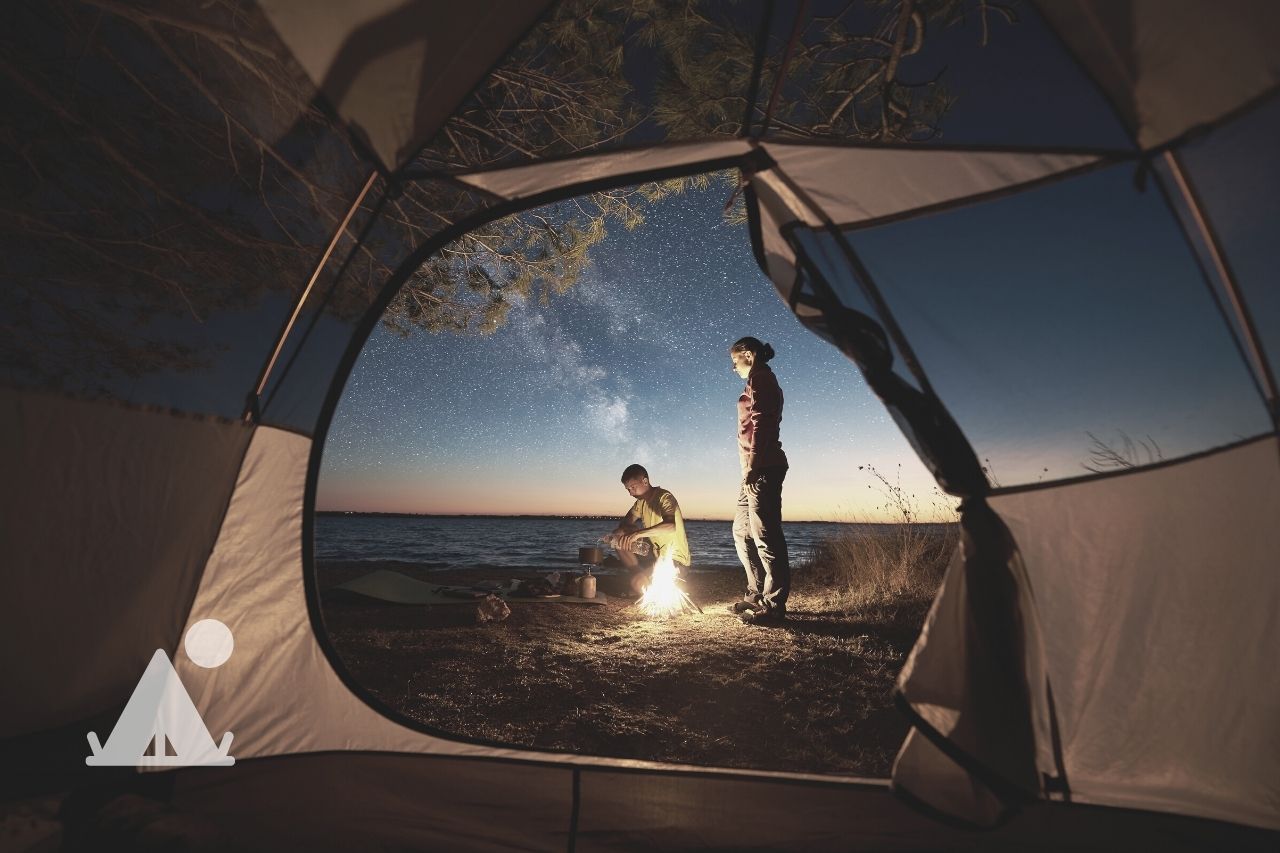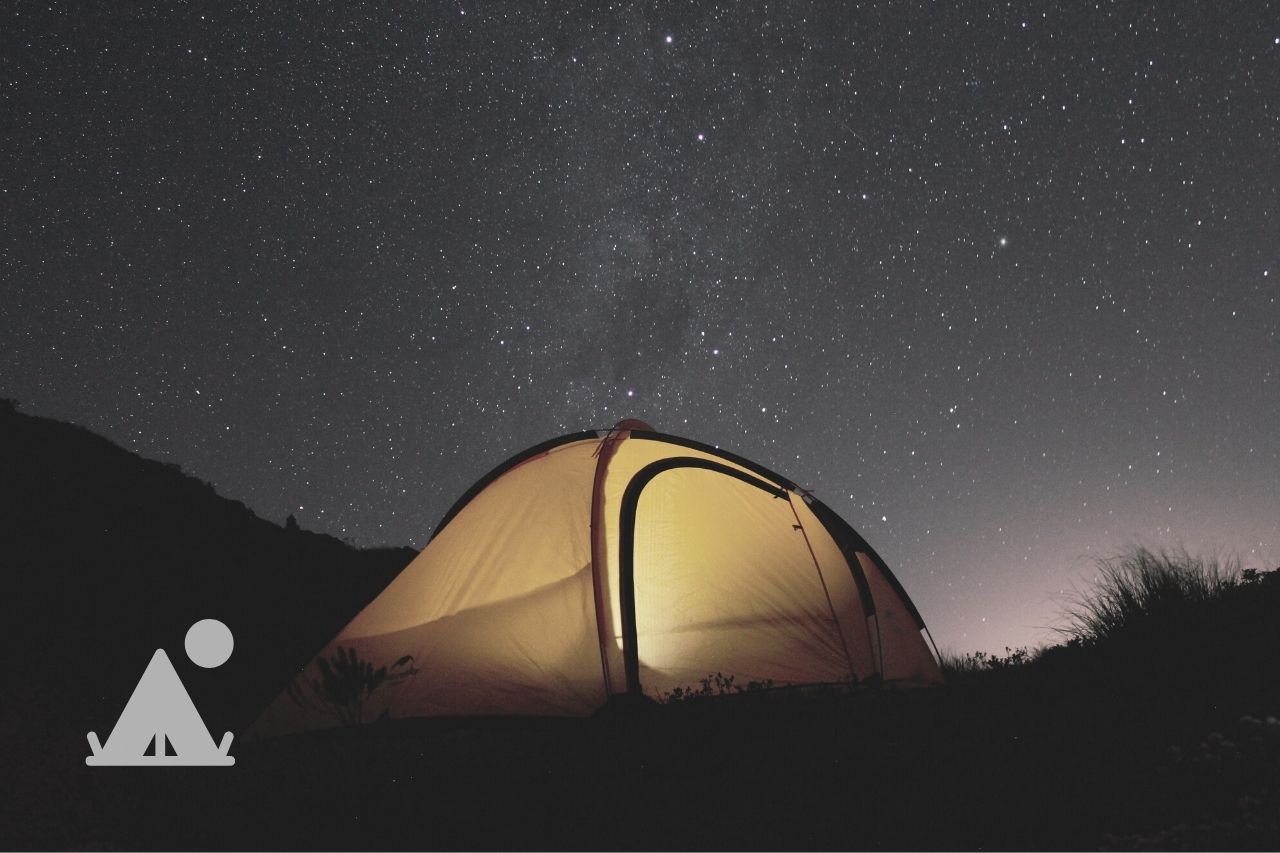For some, heading out into the wilderness in winter sounds totally insane. “How or why would anyone want to camp in cold weather or freezing temperatures?”. In reality, though, it can be a comfortable and enjoyable experience as long as you are well prepared.
Staying warm is essential to having a good winter camping trip. There are plenty of ways to do this. But in this post, I want to talk about tent heating ideas that are safe and work like a charm.
How Do You Safely Heat A Tent?

Use Hot Rocks
It’s an old-school technique that still works its magic. Get several medium-sized rocks and place them close to the campfire. Small sized rocks tend to cool off quickly while the big ones stay too hot for too long. You don’t want to get roasted inside your tent. So, medium size seems like a reasonable option.
Do not use rocks submerged in water as they can explode when heated. Also, don’t be tempted to place the rocks inside the fire as they will give you a hard time taking them out.
Let the rocks sit for about an hour or two (the longer, the better). Keep turning them to ensure the center of the rocks absorb heat from all the sides.
Wrap the rocks in towels or something similar. The wrap must be tight and secure.
Just before bedtime, place the heated rocks in the most strategic places of the tent like around your sleeping bag and tent corners. You can as well tuck them in your sleeping bag if you feel confident doing so.
These rocks will keep your tent warm for hours, even all night!
Use Hot Water Bottles
Another great old fashion tent heating idea. It takes a little different approach from hot rocks, but also quite effective. And I’m not referring to those ordinary plastic bottles you find on store shelves. I’m talking about the hot water bottles that are specifically designed to keep you warm.
Simply fill the bottle with hot water (do not use boiling water), close tightly and place it in your sleeping bag or blankets 10 minutes before hitting the sack. This will keep you toasty when the temperatures are below freezing.
Hot water bottles can stay warm for hours and don’t be surprised if it’s still warm in the morning. Also, they are a much safer way to keep you (and eventually the tent) warm when the weather outside is frightful.
Insulate Under Sleeping Bag
If you are sleeping on the ground, insulation is necessary. Something as simple as placing a sleeping pad under the bag can make a big difference in keeping your body warm.
Pads don’t just provide the benefit of cushioning, but also help to prevent the cold ground from sucking heat out of your body.
Inflatable pads are by far the most popular, and it’s easy to see why. They are lightweight, comfortable and pack down small. But price-wise they are on the higher side.
If you choose an inflatable over a closed cell foam pad, be sure to verify if it has insulation in it. Not all inflatables are made with insulation in mind.
Most winter campers use the combination of closed cell foam pad and an insulated air pad for a good reason; it works effectively. It bumps up insulation, and the foam pad acts as a backup in case the air pad gets punctured.
Also, keep an eye on the R-value. To put it simply – it’s the pad’s ability to resist heat flow. So basically, a sleeping pad with a higher R-value will protect you better from the cold ground.
Attach Mylar Emergency Blanket to the Inside of the Tent
Also known as a thermal blanket, emergency blanket or, if you prefer, space blanket. I’ve never tried this myself, but according to a few campers I interacted with online find this technique quite effective. One thing’s for sure, emergency blankets are great at reflecting heat.
This method is more of retaining heat inside the tent than heating it. So it works best when combined with tent heating ideas mentioned above.
How it works: attach the thermal blanket to the inside of your tent with duct tape –shiny side inwards. The metallic surface will reflect your body heat or other heat sources inside your tent and keep it warm.
These are the four safest tent heating ideas. There are still other ways to heat a tent without electricity but are not so safe. Some campers use camp stoves and portable propane heaters, but I strongly advise against it—especially using them overnight while sleeping.
It’s even trickier using these devices in winter camping because a snowstorm can obstruct roof vents and windows. And we all know how deadly carbon monoxide is in an enclosed space. Simply avoid using any heat source that emits CO2 in your shelter.
Bonus tip: If you can, opt for a small comfortable tent over a larger one. Bigger tents need more heating and insulation to keep the shelter warm.
Now let’s look at a few tips to help you keep warm in your next winter camping trip.
Tips on How to Stay Warm in Winter Camping

- Invest in a quality 4 season sleeping bag. These bags are mostly down insulated and designed to keep you warm in extremely cold conditions. Try to keep your down bag as dry as possible as it significantly loses its insulating ability when wet.
- Bring warmer clothing. Don’t forget a knit hat, hand & feet warmers, wool socks, thick gloves and a puffy jacket. And never sleep with wet clothes.
- Don’t breathe into your sleeping bag. Moisture will get trapped inside, and that’s not good, especially if you use down bag.
- Bring a sleeping bag liner to keep you warmer.
- Eat a hot meal right before bedtime.
- Avoid drinking water or any other fluids before bedtime. Nothing sucks more than getting out of your warm cocoon to pee. However, if nature calls, do it. You won’t be doing your body any favor by holding it as it will burn more calories trying to keep the urine warm.
- Buddy up. More people means more body heat.
Wrap Up
Even though keeping warm in a tent during winter is of utmost importance, don’t over it. Avoid overheating. When it gets too hot, adjust your clothing or heat source.
I hope these safe tent heating ideas were helpful. Happy camping!